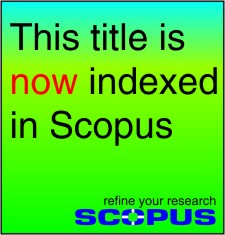Radon. Radium, and Uranium Levels in Some Samples of women Hair Treatment Materials
Samah O. Alrammahi, Azhar S. Alaboodi, S. S. Farhan,
Ali Abid Abojassim, Hussien Abid Ali Bakir Mraity
Background: The objective of the present study is to measure the radon (222Rn) gas, radium (226Ra), and uranium (238U) concentrations in some samples (twenty-one samples) of hair treatments materials, which were collected from the local markets in Najaf Governorate, Iraq. The majority of samples are made in Brazil, the USA and South Africa. Also, the radon exhalation rate in all samples of the present study was estimated. Materials and Methods: A "Solid-state nuclear track detectors" (SSNTD) of CR-39 detector type whose dimensions are (2.5x2.5 and density of 1.31 gm.cm-3). The TASLImage system (made in the United Kingdom) was used to measure radon concentrations. Results: The results show that the values of radon concentrations were ranged from 14.95 Bq/m3 to 183.09 Bq/m3, with an average value of 48.00±7.89 Bq/m3, while the exhalation rate values ranged from 4.15 mBq/m2.h to 50.86 mBq/m2.h, with an average of 13.33±2.19 mBq/m2.h. Also, the average values of 226Ea and 238U in all samples of the present study were 36.84±7.89 mBq/kg and 0.045±0.009 ppm, respectively. The values of radon concentrations and it is exhalation rate in all samples were seen to be lower than the acceptable limit according to ICRP "International Commission on Radiological Protection" (200-300 Bq/m3) and UNSCEAR “United Nations Scientific Committee on the Effects of Atomic Radiation” (57.6 Bq/m2.h), respectively. Conclusion: Therefore, it can be concluded that the hair treatment materials samples which are commonly used by women (in Iraq and other countries) are not contaminated and are safe to use.
Keywords: Hair, Treatments, Radon, CR-39, Exhalation rate, Iraq



